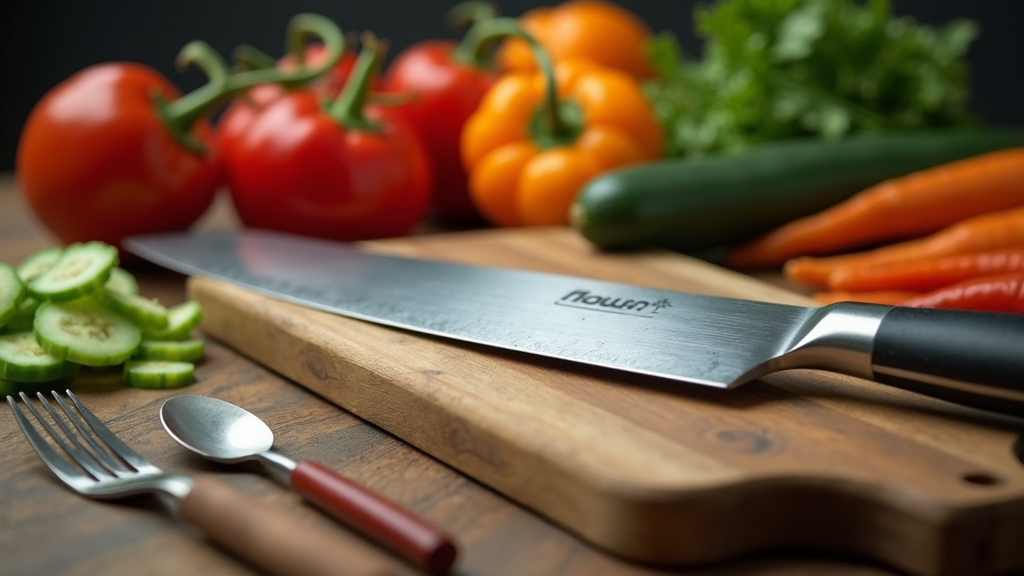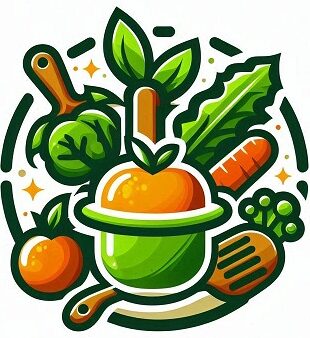Proper knife skills are really important for anyone who likes cooking at home or wants to get more comfortable in the kitchen. Good technique does more than just protect your fingers. It actually makes you faster, saves food from being wasted, and gives whatever you’re making a big upgrade in how it looks and cooks. I’ll share what works for me and offer some clear, practical advice on cutting safely and efficiently. This covers must-know rules, tips for demonstrating great technique, and how sharpening up your skills has all sorts of hidden benefits.

Why Proper Knife Skills Matter in the Kitchen
If you’ve ever hacked away at an onion and ended up with uneven chunks, or worse—a nicked finger—you’ll know that knife skills come in pretty handy. Food prepped with confidence and care cooks better and looks more appetizing. Plus, it just feels good to glide through tough veggies without getting stuck or worried about slipping. Proper knife skills also speed up meal prep and cut down on unnecessary waste from awkward cuts or accidents.
Knife skills have actually grown more important as more people cook at home and try out new recipes, especially with the explosion of cooking shows and home meal delivery kits. Even just knowing which knife to grab for each job helps keep things safe and makes cooking a smoother experience. I really noticed how much easier chopping and slicing became once I paid attention to my grip and started using the right techniques. As more home cooks share their efforts online, being able to prep ingredients like a pro has become a popular goal for folks who want that extra bit of kitchen confidence.
Core Safety Tips for Knife Handling
Mastering knife safety starts with a few basic rules. Keeping these in mind every time you cook will go a long way toward preventing accidents and building your confidence at the counter. Here are five rules that always keep me sharp:
- Keep Knives Sharp: Dull blades are way more likely to slip off food and cause cuts, so sharpen regularly.
- Use the Right Knife: Grab a chef’s knife for larger veggies and meats, and paring or utility knives for smaller, more delicate tasks.
- Always Cut on a Stable Surface: Secure your cutting board by placing a damp kitchen towel or nonslip mat underneath.
- Watch Your Fingers: Tuck your fingertips in, using your knuckles as a guide when slicing. This is called the “claw grip.”
- Carry Knives Carefully: Carry knives pointed down and close to your side. Always announce when moving with a knife if you’re in a shared space.
Following these rules is one of the easiest ways to create a safer environment, especially if you’re cooking with friends or family members who might be newer to the kitchen.
Key Techniques for Safe and Effective Knife Use
Getting comfortable with key techniques is a game changer when it comes to using knives. The grip, motion, and overall approach make all the difference between feeling nervous and working smoothly. Here’s what has helped me most:
- Grip: Hold the handle firmly with your three back fingers, then pinch the blade where it meets the handle with your thumb and forefinger. This gives a lot more control and power than just holding the handle like a club.
- Guiding Hand (Claw): Shape your other hand into a claw, curling fingertips under so your knuckles push the food and guide the knife. This way, the blade rests against your knuckles, not your fingers.
- Rocking Motion: Use a gentle rocking motion to chop, with the tip of your knife resting on the board and the heel rising and falling. This feels a lot smoother, especially for herbs, onions, and carrots, than chopping up and down like a guillotine.
- Slicing, Not Chopping: Let the blade do the work with smooth, forward and down motions for slicing, rather than brute force straight down. Tomatoes, fish, and bread all benefit from this approach, and you get cleaner results with less squishing.
- Consistent Cuts: Try to keep pieces the same size so they cook evenly. Learning a basic dice or julienne cut is really helpful, especially if you want restaurant-style presentation at home.
How to Show Off Proper Knife Skills
People sometimes ask, “How do you demonstrate proper knife skills?” For me, it comes down to showing good habits and being consistent with safe technique every time you prep food. Here’s what proper knife skills look like in action:
- Using the correct grip on both knife and food, keeping fingers safely out of the way.
- Moving the knife with a smooth, confident motion instead of hacking or sawing.
- Lining up cuts for even pieces. This not only helps food cook evenly, but shows you’re paying attention to detail.
- Setting up a tidy workspace, with the cutting board secured and knives handled with care at all times.
- Pausing in busy kitchens before moving with a knife and always placing knives flat when not in use, never in a sink or cluttered spot.
These habits not only prevent injuries, they’re also a way to show respect for your tools and whoever is sharing the kitchen with you. When you get into good routines in your prep work, others are likely to follow your example, creating a safer and more relaxed kitchen environment for everyone.
Benefits of Proper Knife Skills: More Than Just Safety
Once you really dial in your technique, knife skills make every step in the kitchen run a lot more smoothly. Some of the biggest upsides include:
- Improved Efficiency: You’ll prep ingredients way faster when you don’t have to stop and reposition every few seconds or worry about slipping.
- Less Waste: Accurate cuts mean less loss of good food to awkward shapes or trimming away more than you meant to.
- Better Presentation: Uniform slices and dices just look nicer, whether you’re meal prepping for yourself or serving guests.
- Even Cooking: Food cooks more predictably and consistently when everything is cut to the same size.
- Reduced Stress: Feeling totally comfortable with your knife takes away a lot of the anxiety and mess from chopping, dicing, or even just slicing up snacks.
Stepping up your knife game isn’t only about becoming incredibly fast or looking super slick—these skills set you up for success with all sorts of recipes, from salads and stir-fry to soups and roasts. Cooking becomes less of a hassle and more of an enjoyable routine, especially when you’re not constantly backtracking to fix uneven cuts or struggling with dull knives.
Common Challenges and Simple Solutions
No need to feel bad if you’ve run into problems. Most people start off a bit clumsy. I definitely had to work past some mistakes before feeling truly at ease. Some of the common issues I see (and have experienced myself):
- Dull Knives: A quick pass over a honing steel every session and a proper sharpening every couple of months does wonders. If you’re overwhelmed by knife sharpening, a local shop can usually help. Honing takes just a few seconds but goes a long way toward keeping things safe and smooth.
- Poor Cutting Surfaces: Thin plastic boards that slip around and tiny plates are a recipe for disaster. If you only get one cutting board, make it big, thick, and sturdy.
- Awkward Knife Choice: Using the wrong size or type of knife for the job is tough on both ingredients and your confidence. A sharp 8-inch chef’s knife handles nearly everything you’ll face in a home kitchen.
- Overcrowded Workspaces: Clear off your area and keep things tidy. Chopping in a cluttered space makes accidents much more likely and adds unnecessary stress to the process, especially if you’re prepping with others.
Sharpening Your Skills
Improving knife skills is all about practice and being mindful. I started seeing good results just by choosing one new technique to focus on each week, like knuckle guiding, then rocking, then even-sized cuts. Watching videos online or taking a short local class can really help the details click. And honestly, prepping stirfry veggies or big batches for soup gives you a lot of repetition fast. If you’re unsure about technique, many cookbooks include visual guides for classic cuts, and there’s no shortage of skilled chefs online showing exactly how they do it.
Knife Maintenance Tips
Proper care goes a long way. Wash knives by hand, dry them right away, and store them in a knife block or on a magnetic strip. That keeps them sharper longer and avoids those annoying nicks that come from being tossed in a drawer. Set aside a spot for your knives and make it a habit to check for chips or bends—taking a minute to care for your tools helps them last and perform better.
Real-World Examples: Putting Knife Skills Into Practice
Great knife skills don’t just look eye-catching, they make life way easier in the kitchen. Here are a few times I really noticed the difference:
- Making Salsa or Salad: Chopping tomatoes, onions, or carrots into tiny cubes speeds up marinating and delivers more consistent flavor in every bite, plus it’s much quicker to serve up.
- Portioning Chicken Breasts: Clean cuts with the right knife minimize shredding and keep portions even, making them cook perfectly at the same rate every time.
- Dicing Onions Fast (and Tear-Free): Using the claw grip and slicing method helped me get through onions quickly, and the fewer rough cuts meant fewer tears from juices spraying everywhere.
- Slicing Bread Without Crushing: A gentle, steady hand and a slicing, not chopping motion, keeps fluffy loaves from ending up squashed or full of jagged crumbs.
If you practice just a bit each week, you’ll stumble upon loads of new recipes to try with your improved knife work. Preparing ingredients for stirfries, salads, or classic recipes suddenly feels less daunting, and the final dishes always come together more quickly and neatly than you thought possible.
Frequently Asked Questions
Some basics I get asked all the time when teaching friends or newcomers:
What are the key techniques for using a knife safely and effectively?
Key techniques include using the correct grip, guiding the knife with your knuckles, keeping your cutting hand steady, and choosing the right motion for the ingredient. Rocking for herbs, slicing for proteins, and so on.
What are 5 knife safety rules?
1. Always keep knives sharp
2. Use the right knife for the task
3. Cut on stable, secured surfaces
4. Tuck fingers in and use the “claw grip”
5. Carry knives pointed down and set flat when done
How do you demonstrate proper knife skills?
You show proper skills by using good posture, keeping hands safe, making consistent cuts, working neatly, and handling knives mindfully at all times.
What are the benefits of proper knife skills?
Benefits include safer prep, better speed, less waste, nicer presentation, and food that cooks more evenly.
Final Thoughts: Knife Skills Build Kitchen Confidence
Getting good at knife work turns meal prep from a chore into something really satisfying. With a little attention to technique—grip, safety, and practice—anyone can make big improvements in their cooking. Better cuts bring tastier meals, a safer environment, and a kitchen rhythm that just feels good. Everyone, no matter their level, can get sharper both literally and figuratively with the right know-how and a bit of practice. The more you practice and build your confidence, the sooner your skills will become second nature in all your cooking adventures.



